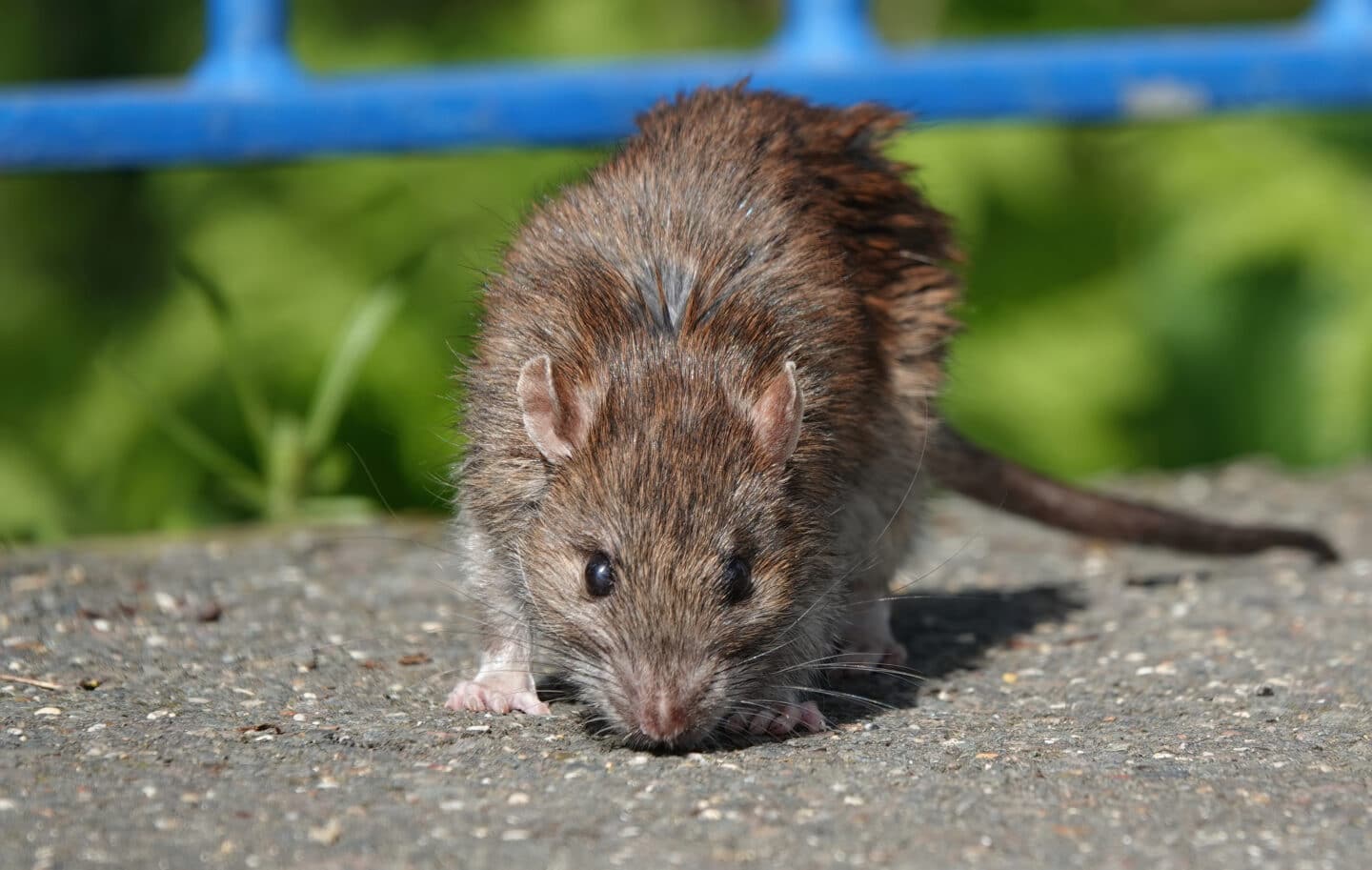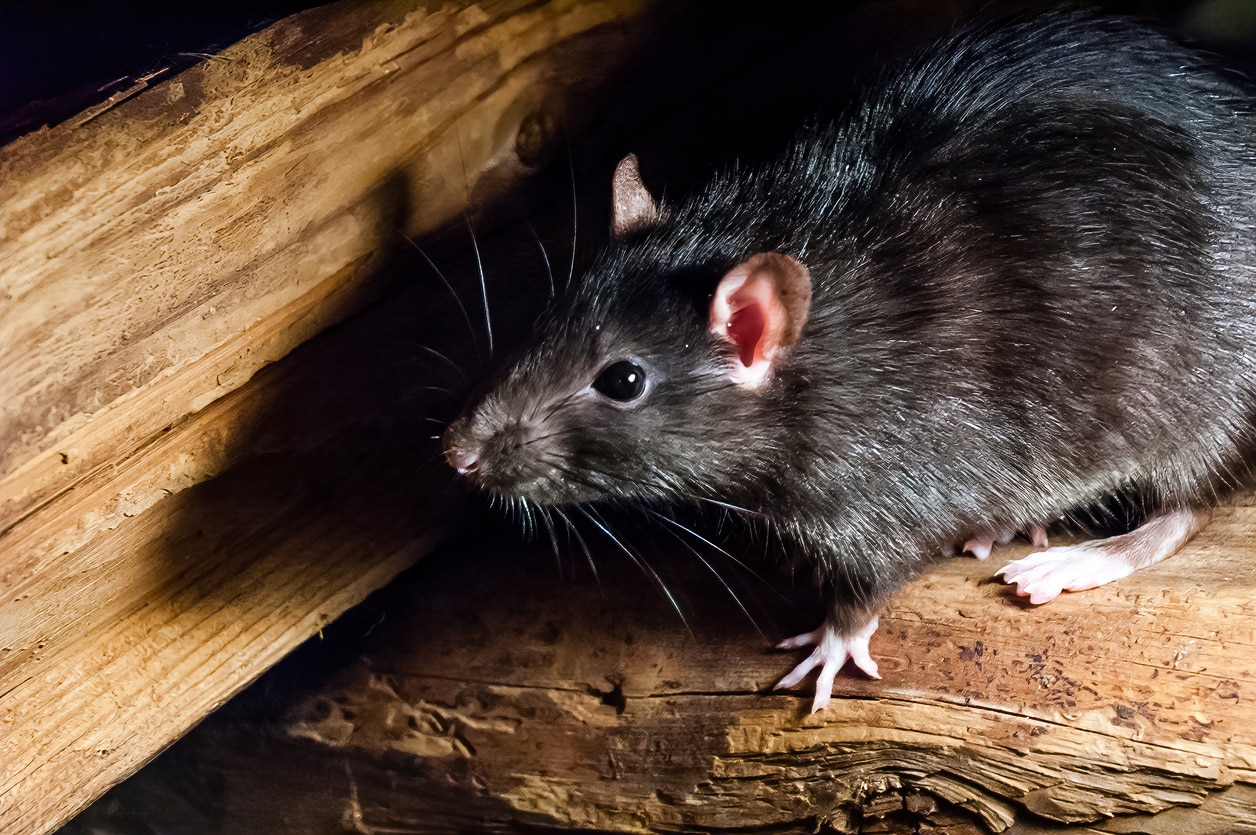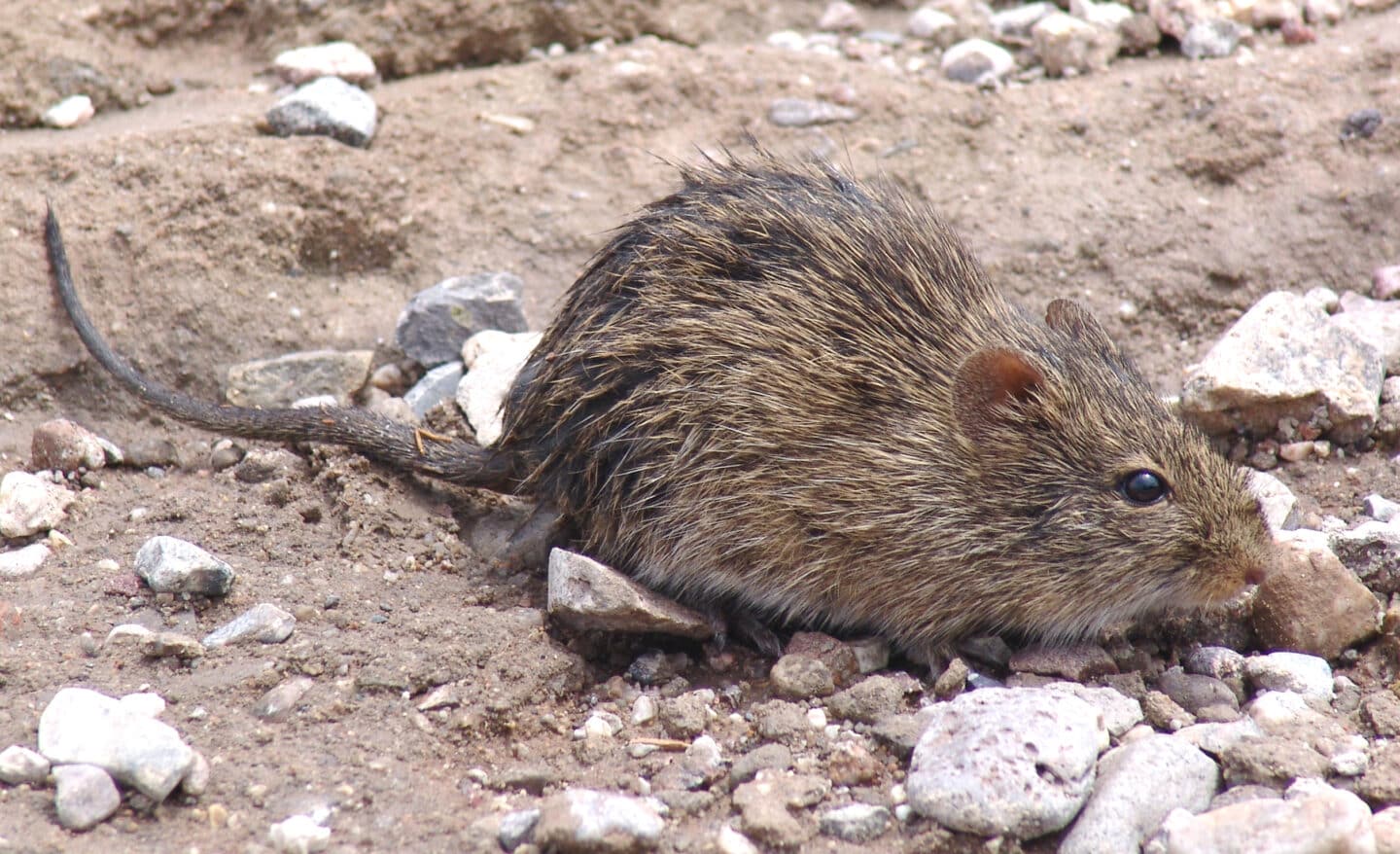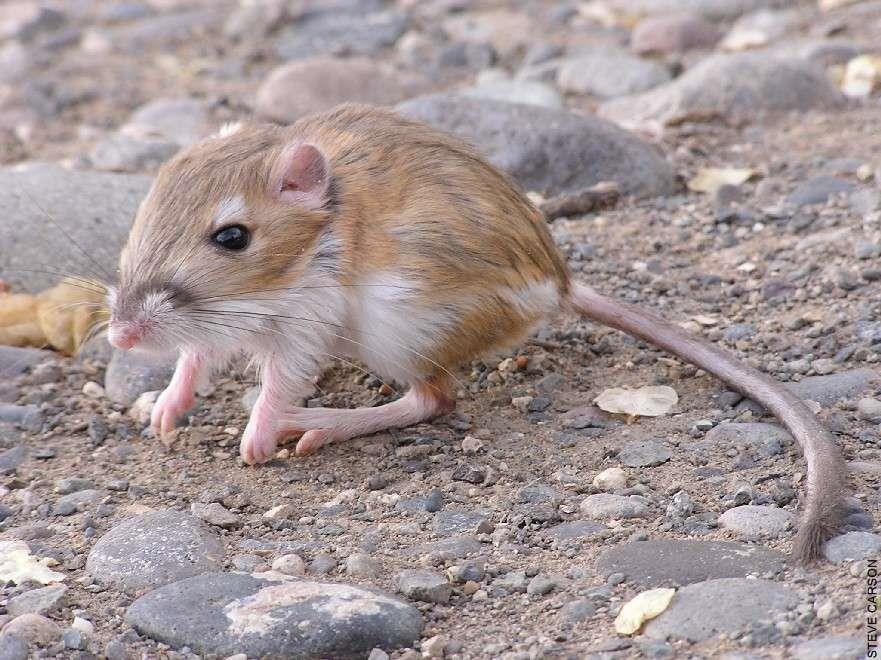Author: Kurt Treftz, Cascade Pest Control
The Pacific Northwest is home to several species of rats, each exhibiting unique adaptations that allow them to thrive in diverse environments ranging from urban areas and forests to arid regions. The most common species seen here in Washington are the Norway rat, roof rat, bushy-tailed woodrat, and kangaroo rat.
Adaptations of the Norway Rat (Rattus norvegicus)

Habitat & Behavior
Norway rats are a ubiquitous and highly adaptable species of rat found in close proximity to humans, whether in urban, suburban, or rural habitats. They like to nest at or below ground level, often making their burrows along foundations, beneath wood piles, and in debris piles. In rural settings, they make their nests in gardens and fields.
Physical Adaptations
Norway rats, also known as brown rats, common rats, street rats, or sewer rats, are large with robust bodies. They are also excellent swimmers, which allows them to thrive in environments with water sources like rivers, sewers, wharves, and wetlands.
Diet
These rats are generally omnivorous, but they are also opportunistic, which means that they can thrive on a variety of foods. They consume grains, meat, and even trash. This enables them to survive in nearly any environment. They can capitalize on human interaction for food castoffs in urban environments or gardens and farms in rural ones.
Cognitive Flexibility
Norway rats display high intelligence and cautious behavior. They will often avoid new objects or traps in their environment, which makes them difficult to eradicate as they evade threats and exploit new resources.
Adaptations of the Roof Rat (Rattus rattus)

Habitat & Behavior
Unlike Norway rats, roof rats prefer the higher ground. These rats are agile climbers and prefer to make their nests in elevated positions: attics, trees, and dense vegetation. They use power lines and other elevated infrastructure for nearly risk-free transfer. They are often found in coastal and port cities because they like the warmer, saltwater-influenced climates.
Physical Adaptations
Roof rats are slender through the body with long tails. This long tail (longer than their body) aids them in climbing. Their large eyes and ears also assist them in navigating complex, elevated habitats.
Diet
Roof rats are also omnivorous but will eat almost anything available to them. They do have specific preferences, usually for fruits, seeds, nuts, and berries. However, they enjoy grains, cereals, and garden vegetables. They might even snack on slugs, snails, insects, and fish when they’re available. In your home, they might feed on kitchen scraps, pet food, and edible holiday decorations.
Nesting
Roof rats are not likely to dig a burrow; instead, they rely on height to build sheltered nests off the ground. This helps them reduce competition from their burrowing cousins and avoid ground-based predators.
Adaptations of the Bushy-Tailed Woodrat / Pack Rat (Neotoma cinerea)

Habitat & Behavior
The bushy-tailed woodrat, or pack rat, is found throughout the Pacific Northwest. They prefer rocky areas, cliffs, and open forests, as well as hollow trees, logs, and woody debris, which they use for shelter and nesting.
Diet
While they are generally herbivores, bushy-tailed woodrats can eat a variety of things depending on their environments, but they are often found to subsist on plant shoots, fruits, seeds, insects, and twigs. They will also eat nuts, mushrooms, and some animal matter. In drier climates, they can get their water needs met through succulents.
Adaptations
Bushy-tailed woodrats are remarkably adaptable, making their homes throughout the Pacific Northwest from forests to cliffs to deserts. They utilize the available cover of the environment, whether natural or human-made, to find shelter from predators and build nests for their young.
Behavioral Adaptations
These rats are also known as “packrats” because of their tendency to collect shiny objects to take back to their nests. Despite their hoarding instinct, they are also easily distracted, hence their other name, “traderats”. So named because they tend to drop things they are carrying to pick up something else.
Adaptations of the Kangaroo Rat (Ord’s Kangaroo Rat, Dipodomys ordii)

Habitat & Behavior
While kangaroo rats are typically found in the drier, sandy, or rocky areas of Oregon and eastern Washington, they are also found in the Pacific Northwest. They are more solitary and like to be out at night, while they spend the hotter hours in their cool underground burrows.
Physical Adaptations
As their name suggests, these rats can make long jumps to escape predators, using their long hind legs and tails. They are colored to blend in well in a more desolate, desert environment.
Water Conservation
Kangaroo rats are particularly well-suited to arid environments. They can obtain all the water they need through their diet of seeds. Their kidneys are specifically adapted to produce highly concentrated urine, which minimizes water loss.
Burrowing
Burrowing is also a crucial adaptation for these rats, as it enables them to thrive in extreme conditions. Their complex nests help maintain a stable temperature and humidity. They even block the entrance during the day to conserve moisture and keep the temperature regular.
Rats in the Pacific Northwest are remarkably well-suited to adapt to their environments. From the Norway rats that thrive among human developments to the roof rats that exploit elevated habitats, to the woodrats that utilize a wide range of materials for their nests, and the kangaroo rats that can capitalize on arid regions, these rats are persistent and versatile.
